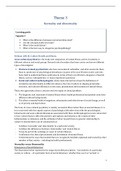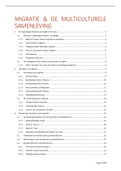Summary
Minor Cross-cultural psychology: Summary Theme 3: Normality and abnormality
- Course
- Institution
- Book
A complete summary of Theme 3 of the minor cross-cultural psychology. It is written in English, because the exam will also be in English. It has all the articles from the Theme summarized.
[Show more]










